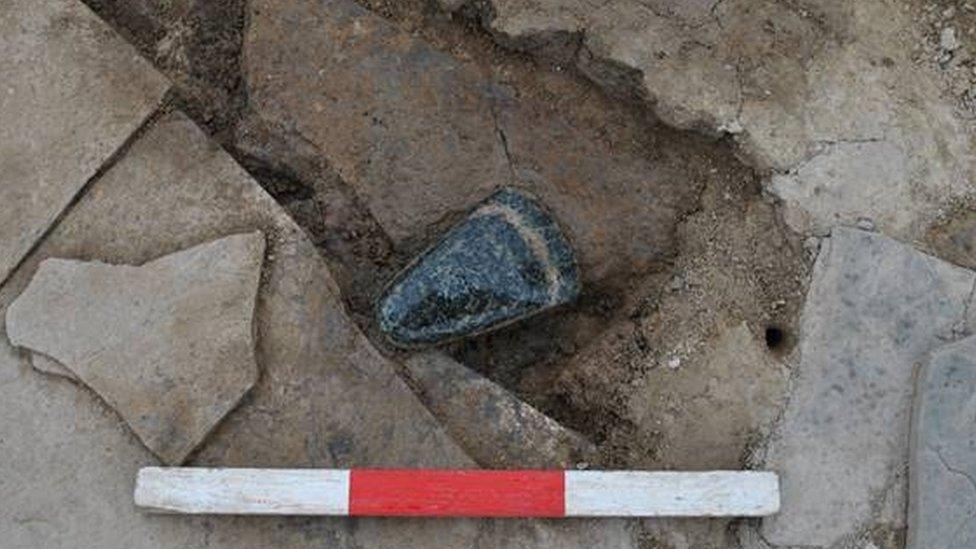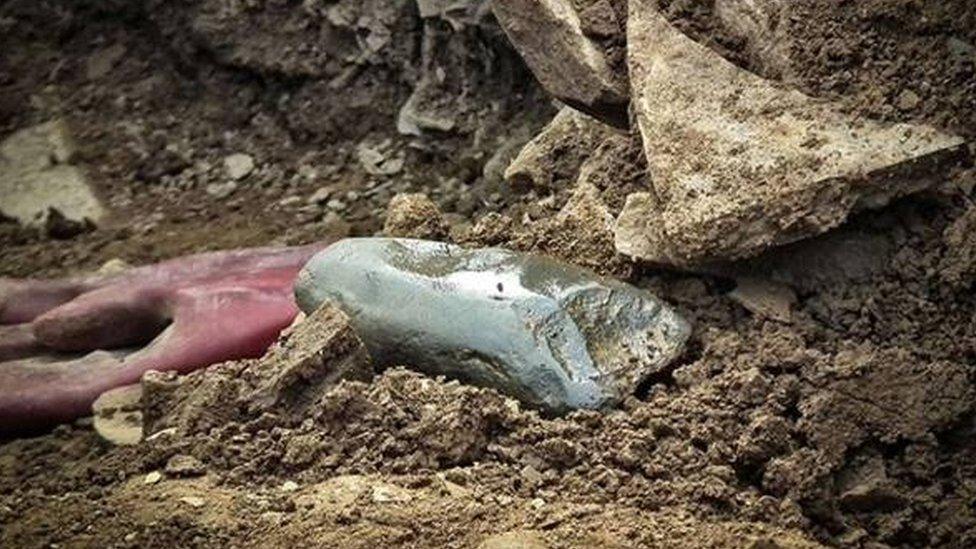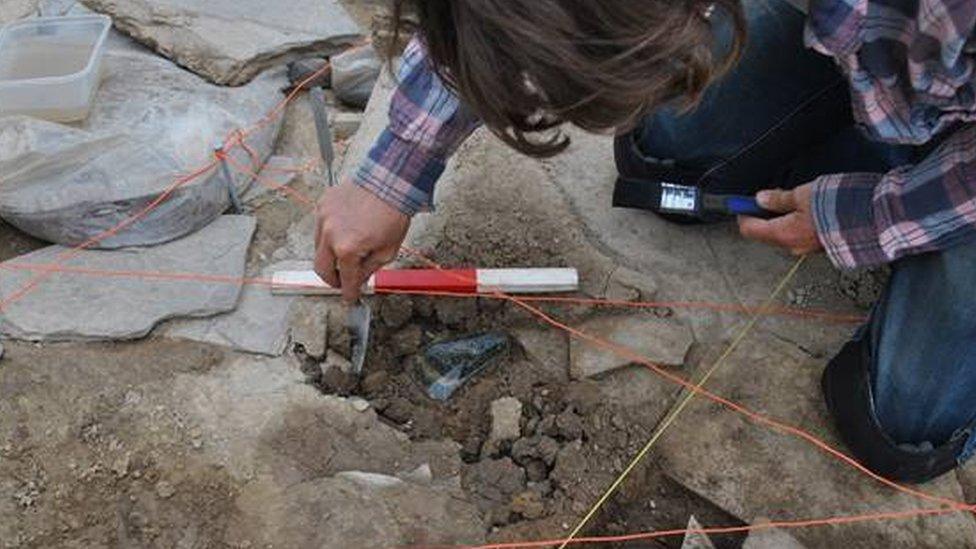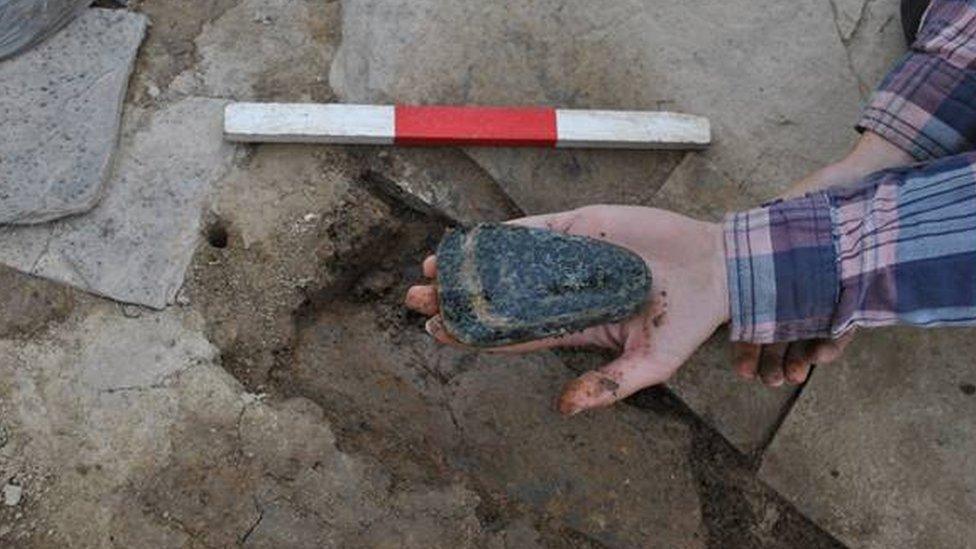Archaeologists marvel at Neolithic axe finds in Orkney
- Published

Archaeologists were "astonished" by the selection of the stone and how it was crafted into an axe
A large number of stone axes are among more than 30,000 pieces of pottery, bones and tools found so far at a 5,000-year-old site in Orkney.
The Ness of Brodgar is one of the largest and most important Neolithic excavations in Northern Europe, according to archaeologists.
Two of the polished stone axes show damage from use.
One of the tools, found by an Australian student, has been described as an "object of beauty".
Ness of Brodgar Trust and the Archaeology Institute of the University of the Highlands and Islands (UHI) are running the excavation.

Another of the stone axes found at Ness of Brodgar showing damage from use
UHI said the axe found by archaeology student Therese McCormick "astonished" archaeologists at the site through its "sheer quality of workmanship".
The Gneiss stone had been chosen so that the natural coloured banding was reflected in the shape of the item and then expertly worked and polished to create an object of beauty, said UHI.
The first of the two recently-discovered axes was uncovered in a new trench dug on the shore of Loch of Stenness.
The expertly-worked and polished object was the largest axe so far discovered on site and had been heavily used and damaged at the cutting edge.

Therese McCormick making her discovery
Site director Nick Card said: "It is nice to find pristine examples of stone axes, but the damage on this one tells us a little bit more about the history of this particular axe.
"The fact that the cutting edge had been heavily damaged suggests that it was a working tool rather than a ceremonial object.
"We know that the buildings in the complex were roofed by stone slabs so this axe was perhaps used to cut and fashion the timber joists that held up the heavy roof."

The Ness of Brodgar is an archaeological excavation covering an area in the Neolithic Orkney World Heritage Site.
It is described as a sophisticated complex of monumental stone buildings, enclosed by walls up to six metres thick, and was occupied by people more than 5,000 years ago.